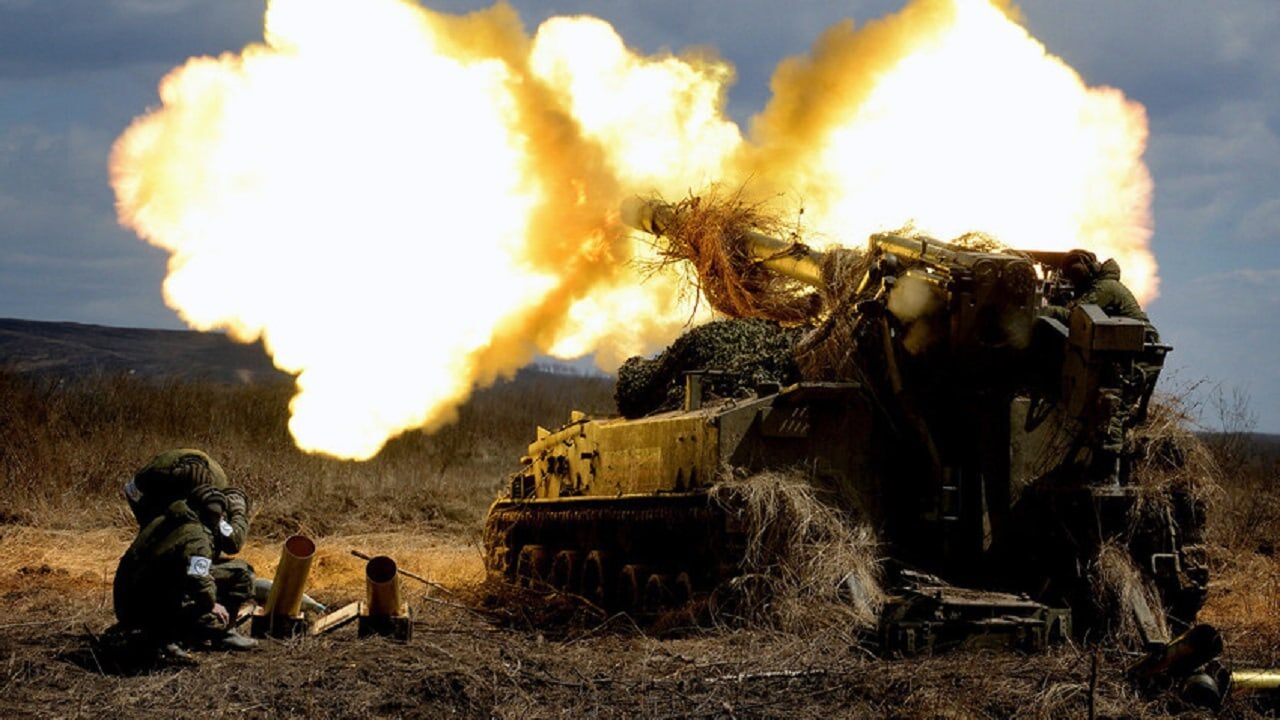Russia’s Strategy Of Attrition in Ukraine Likely To Continue In Donetsk – The Russian military has changed its tactics and the way they have secured Luhansk province, including the cities of Severodonetsk and Lysychansk, isn’t likely to change as they turn their sights on Donetsk province. In taking Donetsk, Moscow will then control all of the industrial heartlands of the Donbas.
While the early stages of the Russian invasion were an abject disaster for Moscow’s military, with heavy casualties, massive losses of equipment, and the failure to capture any of the large population centers, they’re learning from some of their mistakes. It seems Russia’s strategy boils down to just a single word: attrition
The Russian tactics of a war of attrition would not work in a Western country, where citizens would be protesting the heavy price of casualties and equipment for taking territory only measured in yards most days. However, in an environment where the government controls the media and all of the news coming out of the war, it will continue to work for President Putin. The Russian people haven’t received any updates on casualty numbers since the early days of the war.
Therefore the war by attrition is a tactic by Putin to play for time. Time to make the gains needed to accomplish his goals inside of Ukraine and keep the cost of the “special military operation” from the people.
The UK Ministry of Defense posted its latest intelligence assessment that stated that Russia’s tactics are unlikely to change when they turn their sights on Donetsk.
“The fight for the Donbas has been grinding and attritional and this is highly unlikely to change in the coming weeks,” the ministry said in a post on Twitter.
“Russia’s focus will now almost certainly switch to capturing Donetsk Oblast, a large portion of which remain under the control of Ukrainian forces,” the ministry added.
Poor Planning, Training, and Logistics
The Russian defense ministry believed that they’d capture the entire country in short order with a blitzkrieg type of operation. They thought they’d capture Kyiv quickly replacing the Ukrainian government with more of the proxies as they installed in the puppet “People’s Republics” in the separatist-held areas.
Poor planning, training, and terrible logistics doomed that plan to failure. Tactically they were a mess, as junior officers and NCOs were given no freedom of making decisions forcing senior officers (Colonels and Generals), to lead attacks. Ukrainian forces quickly recognized that Russian forces didn’t have secure communications and zeroed their artillery on command and control centers, killing many senior officers, which further threw the offensive into disarray.
Likewise, the terrible assumption that the Ukrainian people would welcome Russian troops with open arms was an awful…and costly mistake. Russian troops were ill-prepared for what followed. Logistical logjams stretched for miles, and the Russians had no plan of protection for those. Air-to-ground operations were poorly coordinated. The vaunted Russian air force still hasn’t attained air superiority over Ukraine. Most airstrikes are launched from Russian, or Belarussian airspace.
But after the overly-ambitious blitzkrieg failed, the Russians adapted some of their tactics and have shortened their lines of communication and supply, and are focusing on the southern and eastern areas of Ukraine.
Russia’s War Of Attrition:
In a piece posted on the Department of Defense’s website, it spelled out Russia’s goals and how they will probably proceed on attaining them.
“We’re not going to tell the Ukrainians how to negotiate, what to negotiate and when to negotiate,” said Colin H. Kahl, the undersecretary of defense for policy. Kahl says that the Russian tactic of a grinding, attritional approach is basically an artillery war. They mass their artillery similar to what they did in the Second World War and pound the Ukrainian positions, including civilians and civilian infrastructure to weaken the resolve of the defenders.
He mentioned the US’s sending of M-777 long-range howitzers as an answer to the Russian artillery, giving the Ukraine military a much-needed stand-off ability. But the numbers of the artillery even with Germany and others sending 155mm artillery pieces just aren’t there. The Russians have a tremendous advantage in both numbers of artillery pieces and ammunition.
One defense analyst said that Russia’s strategy is more akin to World War I tactics than modern warfare of rapid movement of troops. They gained only about 100 meters a day for most of the past month.
“Russia’s strategy is a First World War approach of breaking your opponents. It could work – there is some evidence that Ukrainian morale is a problem,” the unnamed analyst said.
Putin and Russia have targeted the coal and steel-producing Donbas to boost the Russian economy while strangling Ukraine’s ability to use the Black Sea in selling their grain. Their strategy is based on having time and waiting for the West to lose its focus on the Ukrainian issues.
One issue that remains is the economic sanctions levied on Russia. So far, Moscow seems to have weathered the storm fairly easily. However, Kahl states that are having an effect. “This year will wipe out the last 15 years of economic growth in Russia and the impact of sanctions are only getting started.”
Will the West’s staying power last long enough? Or will they leave Ukraine in a lurch? The Russians are betting they will.
Steve Balestrieri is a 1945 National Security Columnist. He served as a US Army Special Forces NCO and Warrant Officer before injuries forced his early separation. In addition to writing for 19fortyfive.com and other military news organizations, he has covered the NFL for PatsFans.com for over 11 years. His work was regularly featured in the Millbury-Sutton Chronicle and Grafton News newspapers in Massachusetts

